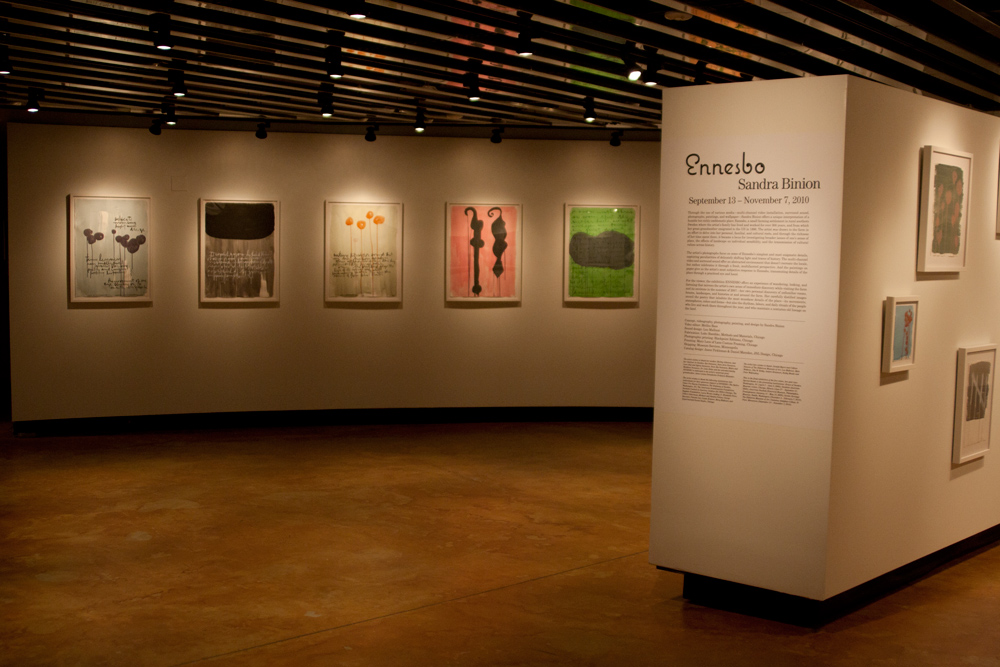Strolling through the Ennesbo exhibit in Hillstrom Museum, you’ll notice multiple pieces of art displayed in various ways.
Perhaps you’ll come across several water paintings, some with poetic words obscurely written with simple and quick strokes of a paint brush. Or maybe you’ll pass by a series of photographs of an old barn. Or most surprisingly of all, you’ll find yourself facing four television screens, all displaying the same scene in small vignettes set at different points in time.
The scenes in the videos are inspired by simple, everyday things that occur in Ennesbo—like stacking hay or rowing a boat. Sandra Binion, the artist, actually captured ten hours’ worth of footage—the displayed clip was cut down to a mere 13 minutes.
You’ll also notice that there is 300 year old wallpaper displayed—which is all not simply there for viewing pleasure; it’s for the experience of life in Ennesbo as an immersion experience.
Ennesbo is a small farming settlement that Binion, the artist, and her family owns, situated in southern Sweden, three hours south of Stockholm. The exhibit immerses the audience in the atmosphere of the artist’s childhood, a place of imagery and iconic objects with every single piece of art telling its own story.
If you walk into the Hillstrom Museum, you’ll eventually come across a wall displaying two pictures and a heavy chest set physically on the floor. Examining each picture, you’ll notice a depiction of an indistinct signature along a painting of what seems to be a bunch of random tally marks.
In most cases, you would simply disregard the painting, or muse quietly to yourself, “Oh, that’s an interesting choice of subject.” You’d never guess from just observing the piece of art, but there is quite an interesting tale behind this particular trio combination.
Binion explains in her own words the story behind the marks: “In my old farm, there used to be a man who would deliver sacks of grain to the barn,” Binion said. “He would stop by the barn, throw the sack in the chest and strike a tally to let the family know he had done so. And to confirm, he would also sign his name on the wall of the barn.”
Binion walked into her barn one day and suddenly decided to start sketching what she had seen—the scribble of a signature and the ominous tally marks. Eventually, she turned those sketches into the paintings that they are today.
Behind every piece of art is a story untold. Binion wanted to capture the smallest and simplest of joys and share it with the world. “I often ask myself,” Binion said, “what are you left with? And what can you share with [others]?”
Binion’s intention was to involve the world in her passion for her great grandmother’s home, simply by sketching and expressing herself in a journal. In so doing, she’s proven that a picture can indeed speak a thousand words.
